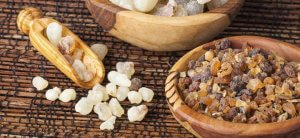Our sense of smell, which is also known as olfaction, is as old as time. It is the most primeval and mysterious of all the five senses, and more connected to human survival and evolution than the other four. It is said that a fetus in the womb starting at about 28 weeks into a pregnancy can actually smell the same odors as the mother, and all humans have the capacity to distinguish literally thousands of unique smells.
Within the modern world of perfumery and commerce, a strategically designed scent has proven to make a brand unforgettable, heighten value perception, increase sales, extend customer linger time in the case of retail environments, attract new customers and a whole host of other benefits.
It’s no surprise then that scent branding has dramatically evolved into a billion dollar industry over the course of the past several decades, making scent creation an art form in and of itself. But how do perfume masters understand the complexities of the power of scent and harness them to create winning marketable fragrances?
The following article delves into the history of scent, the evolution of olfactory sense, the power of scent in human behavior and the anatomy and secret behind winning fragrance compositions.
Fragrance In the Ancient World
Throughout mankind’s evolution, reliance on smell as a warning of danger, such as fire, have induced a ‘take flight’ response, or a sense of safety, like the smell of food cooking or a friend approaching. Both have helped the human spirit to endure.
The sensory world of our distant ancestors is a giant tapestry that modern archaeology has pieced together, like a puzzle although there are still many missing parts. It is known that multiple ancient cultures used scent in daily life, and the evidence of such is found in the form of intricate perfume vessels. Perfume, however, was precious and costly and reserved for royalty and the wealthy classes.
The Egyptians believed that fragrance, particularly frankincense and myrrh, were the sweat of the sun god, Ra, and they promoted cleanliness, which was of personal importance. They bathed daily and sometimes after every meal.

The use of scent spread sweetly from their civilization to the Romans and Greeks. In ancient Greece, wearing a fragrance was also considered appeasement to the gods, and many Greek physicians practiced an ancient form of aromatherapy, believing that certain smells improved health and vitality.
Ancient Persia (Iran) and China prized fragrances, although the Chinese used incense for their surroundings rather than as perfumes to adorn the body.
Throughout Africa, scented oils served both as protection against the powerful rays of the sun as well as for their captivating aromas. Cedar, myrrh, frankincense, and cypress were favored scents in ancient Mesopotamia and Babylonia.
Ancient fragrances utilized oils extracted from flowers, resins and woods as the “carriers” of scent while today’s perfumes utilize alcohol for that purpose.
Relevant Research On The Evolution Of Smell
A recent scientific study was conducted by the University of Alaska, Fairbanks led by Dr. Kara Hoover and involved Professor Mathew Cobb of The University of Manchester’s Faculty of Life Sciences, the State University of New York and Duke University. It was published in the journal, Chemical Senses, and closely reexamined the evolution of our sense of smell and its link to the taste of food.
This research indicated that our genes tell the story of our taste for diverse foods, and offer possible answers as to how our preferences may have been influenced by variations in our ability to smell.
The Power of Scent In Human Behavior
According to Arnold Zlotnik (pictured below), President and CEO of Alpha Aromatics, and its sister company, Air-Scent International, “Our perfumers respect the supremacy of fragrance over the human mind, which is like no other found in any legal substance anywhere in the natural world. Fragrances can unlock memories long buried and are known to promote pleasant moods, empower self-confidence and reduce stress. While scent marketers are well aware that a fragrance can only exert influence on consumer behavior if its concentration is at a level of conscious awareness, there are still those in the world of commerce who underestimate the tremendous influence of scent to evoke both positive and negative reactions.”

When deployed in appropriate settings, fragrance can influence purchasing interest, product perception and brand loyalty. For example, when a floral scent is introduced to a retail setting featuring women’s sleepwear, both the price women are wiling to pay and the perceived value of the sleepwear will increase.
Scent can also affect individual values such personal kindness, honesty and even political preferences. In a recent study, iconic glass cleaner, Windex with its citrusy scent, was shown to affect the time and money donated to important foundations like Habitat For Humanity.
In fact, the political arena is also open to its own kind of scent branding albeit manipulative and sometimes dirty. New York State Tea Party activist, Carl Paladino, was running in the gubernatorial race in the fall of 2010. He creamed his conservative rival, Rick Lazio, by resorting to sending campaign flyers to thousands of registered Republicans that were infused with the malodor of rotting garbage. He vowed to end “the stink of corruption in Albany.” His symbolism was quite effective even though he lost the election to Andrew Cuomo.
How Scent Travels
Smell is found in the odorous compounds that comprise the air around us. Our sense of smell is a form of chemoreception, which is a physiological response to a chemical stimulus. Our noses alter these chemical signals into neural impulses.
Malodors travel in the air by diffusion, which means that when perfume particles blend with the elements in the air, they tend to move from areas of high concentration to those of lower concentration until equilibrium is established. This is the basic driving force behind the movement of all odorous amalgams.
Most malodorous molecules are carbon-based, organic blends, although sulfur and ammonia, which are simple compounds, also emit odors. In fact, smells are integral to daily life and all plants and animals and any byproducts associated with them release odors, including everything from food and beverages to furniture and leather footwear and accessories.
Scent And The Human Brain
The human sense of smell greatly influences how we perceive and interact with others, select a mate, and even decide on favorite foods. Smell can also be a potent trigger for trauma and can activate PTSD.
The reason scent is so powerful is because the olfactory bulb is a structure that is part of the limbic system, which is the part of the brain that deals with both memory and emotion. When olfactory receptors are aroused, the pathway by which they transmit impulses to the brain are directly linked to this ancient cerebral system.
This is why reactions to smell are never ambiguous. They are either pleasant or unpleasant instantly. Also, their first impressions last a lifetime and become enmeshed in childhood memories.

For example, the smell of wood burning in a fireplace, fresh cut grass, and the pine aroma of a Christmas tree are almost always associated with positive memories. The aromas of baking bread, cookies and bacon remind most people of home sweet home.
In the same manner as an old song can immediately transport the listener to another time and place, a scent, no matter how long ago it was experienced, remains strongly associated with the first time it was introduced. The memory of fragrance is stored in neural networks.
In the book, Remembrance of Things Past, author, Marcel Proust, describes how memories long buried can instantly come alive again when the protagonist in his story goes through the simple motion of dipping a biscuit into a cup of tea and taking a whiff.
A 2015 study entitled: Proustian Products are Preferred: The Relationship Between Odor-Evoked Memory and Product Evaluation was published in the journal, Chemosensory Perception. Conducted by Rachel Herz of Brown University, a neuro-scientist and expert on the psychology of smell, and Haruko Sugiyama and colleagues at the Kao Corporation in Japan, the focus of this study was to understand the process by which the scent of a particular product calls to mind personal memories and how that fragrance can affect a consumer’s perception as to its appeal and quality.
Resulting research indicated that pleasant lotion fragrances evoked stronger emotional memories than unscented varieties by most of the 272 female American female participants, who were between the ages of 22 and 31.
Scent Perception And Cultural Differences
Prior learning, history, cultural and geographic variations all come into play when any two people smell the same thing. This can lead to a diversity of reactions that are culturally based. Researchers have found that even when two cultures share the same language and many traditions, reactions to the same smells can differ.
In a study published in 2016 in the journal, Chemical Senses, researchers from the Lyon Neuroscience Research Centre in France and Montreal Neurological Institute in Quebec tested subjects for their feelings about six selected scents: namely, anise, lavender, maple, wintergreen, rose and strawberry.
Previous studies have shared their general conclusions that processing scent in the human brain is not just a reaction to the chemicals it may contain, but is also influenced by experience with and knowledge of the scent. The findings of this study are unique, however, because these researchers compared two cultures that share the same language and have similar customs.
According to lead researcher, clinical neuro-psychologist, Jelena Djordjevic: “In psychology, we call these effects ‘top-down influences’ and we were excited to further develop our understanding of them. Even basic processes, such as smelling a scent, are influenced by where we come from and what we know. The sense of smell occupies a very old part of our brain. Studying this ancient sensory system helps us understand how we have evolved as a species…”
The Anatomy Of Fragrance and Musical Composition
The mystery and allure of fragrance creation has often been likened to the mystical composition of a musical symphony. Both art forms define the steps of their development in terms of notes, and harmony between notes is vital to both creations albeit they are expressed diversely.
Symphonies are musical stories inspired by ideas, and fragrances are olfactory tales taken from the aromas that comprise the cycle of life and beauty of nature. The precise anatomy of both a fragrance and a symphony is elusive. It involves so much more than just a finished scent or musical composition.

A superior fragrance is as sensual and complex as a grand musical symphony. In order to stand out from others of their ilk, both must create in their own way an invisible emotional tone that connects in one case to the listener and in the other to the nose. Perhaps their most striking similarity concerns the shared ability to create a powerful ambiance that is multi sensory.
In the words of perfumer, Francis Kurkdjian: “To me, music and perfume are very much related because they use a common medium–the air. You hear music when the vibration of the sound in the air hits your ears, the same way that perfume needs the movement of air to come to your nose. Both mediums are invisible…That is why they are so deep in our souls.”
The two art forms are allied even by their terminology and both speak the same language. Besides notes, terms like tone, accord and harmony, are used for both. A chord in music initiates the listener to the land of music and with its two or more keys, notes or tones that are played together correlate to the top note of any perfume.
Top Notes
In a fragrance, the top note is responsible for the scent’s first impression. Sometimes known as heads notes, they are often composed of light, fresh and uplifting volatile oil molecules such as: citrus, ginger and chamomile. The function of a top note is to captivate and to keep the wearer in a state of multi-sensory suspension. It serves as an invisible hook that usually lasts from 5 to thirty minutes before evaporating. This allows for the entrance for the layer of the heart or middle notes.
Heart or Middle Notes
These notes make up the body of the fragrance are often blends of lemon grass, jasmine, rose, lavender and coriander. They are usually soothing and last anywhere from about ten to sixty minutes. They also influence the final base notes of a scent.
Base Notes
These notes are heavy because they bring depth and solid definition to a fragrance. They alone are responsible for the holding power of a scent, as their slow evaporation rate also diminishes the fading lighter notes. Base notes only show themselves about a half-hour after application to the skin. They are the most expensive of all oils and include: cedar wood, sandalwood, myrrh, patchouli, ylang ylang, musk and vanilla. These notes leave both a fragrance on the skin and an imprint on emotion and memory.
Read our guide to the notes of fragrances to better understand how to identify each.
Alpha Aromatics And Our Drive to Create Unique Fragrances
Creating a winning consumer fragrance takes a wealth of experience, knowledge, creativity and aromatic instincts, as well as the very latest in gas chromatography; mass spectrometry; headspace analysis; distillation; extraction and quality control technology.
As a master creator and supplier of scents for some of the most respected brands in the world, we offer the widest and most effective selection of molecular odor counteractive additives on the marketplace today.
Our innovative, cutting edge technologies are developed in our 85,000 square-foot Technology Center located just outside the great city of Pittsburgh. Our equipment is the best and most advanced in the field of industrial science that money can buy. Our innovative and sustainable technologies enrich our lives and protect the precious and vulnerable environment in which we live.
We have well over 7 decades of experience blending scents with products, product lines, fine perfumes and more. We provide organic, natural and designer fragrance compositions for a myriad of purposes; namely, fine perfumes, personal care products, candles and diffusers, fragrances for home products and odor neutralizers for those that use the services of private label manufacturers, custom packaging companies, toll blenders and more.
Our clients understand and respect the fact that creating an emotional tone through a fragrance is a scientific process that like fine wine, it cannot be rushed.
Our master perfumer, Roger Howell, and our chemists are among the most talented in the perfume industry, and every fragrance we develop is an artistic, unique blend of both synthetic and natural substances, including essential oils extracted from flowers and plants, and man-made synthetic smells.
We design fragrances, layer by layer, to improve ambient branding and that all-important bottom line. Our aroma artists work until client satisfaction is achieved. Striving always to surpass competition, they are constantly evolving to meet the dynamic, complex demands of our valued clients.
Winning requires a strong, consistent work ethic, which constantly reinforces more than seventy years of hard work, accomplishment and recognition.
Final thought on fragrance: I think a fragrance is more of a signature than even what you wear— something you’ll remember more down the road than a shirt. ~Ryan Reynolds
(This article was written via the input and collaboration of our teams at Alpha Aromatics and was originally published in the printed publication of Euro Cosmetics)
 alpha aromatics®
alpha aromatics®